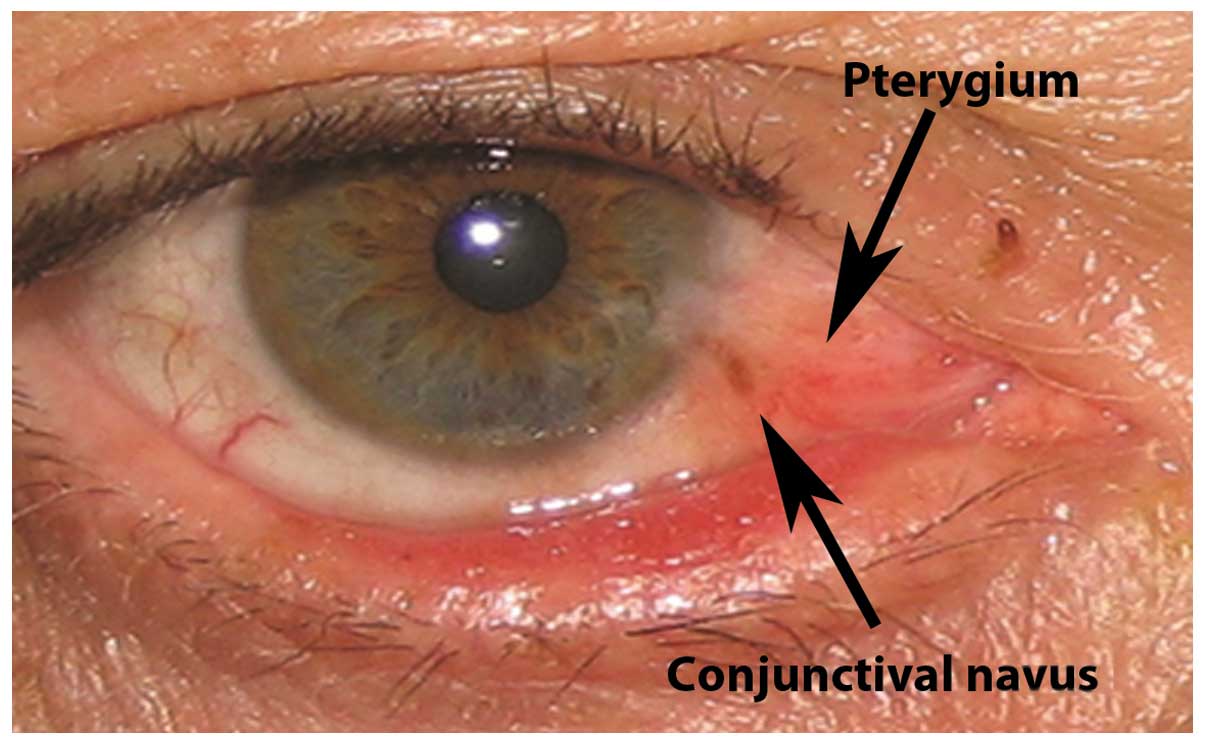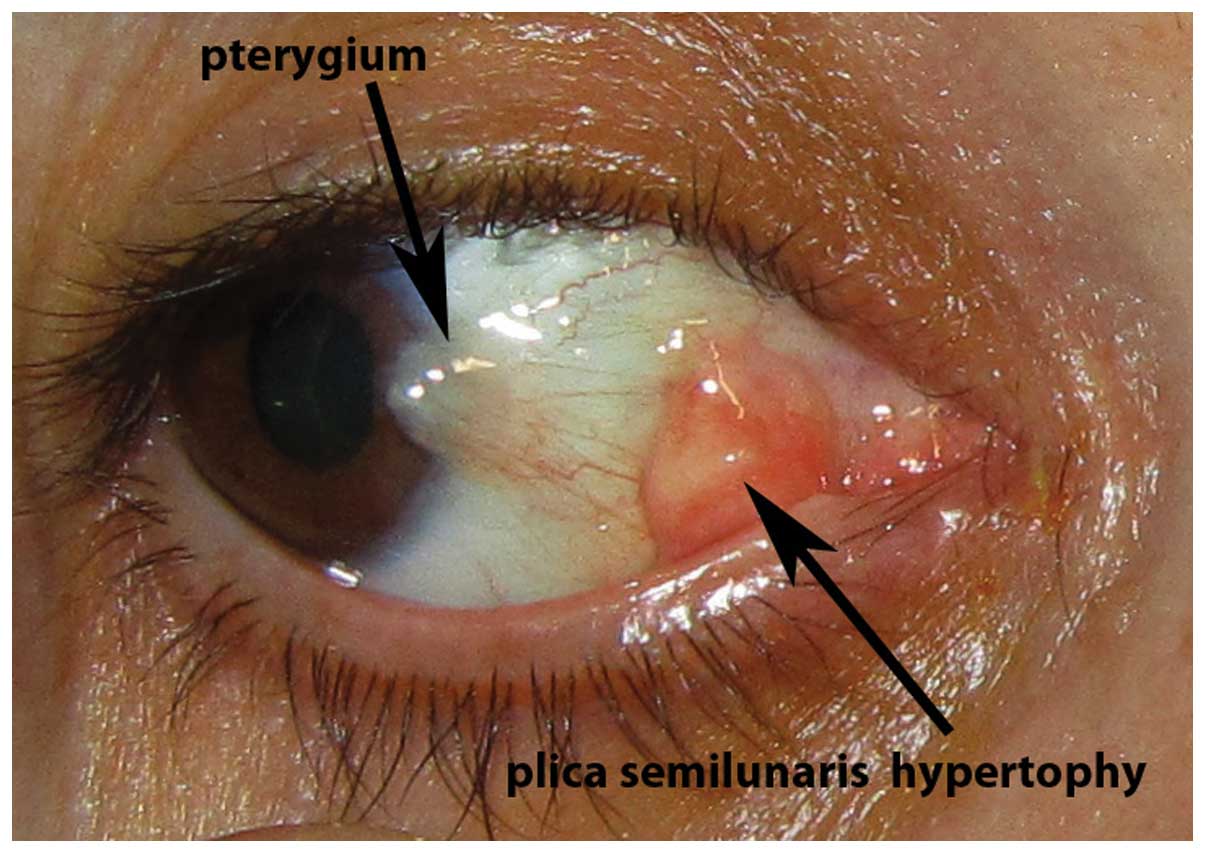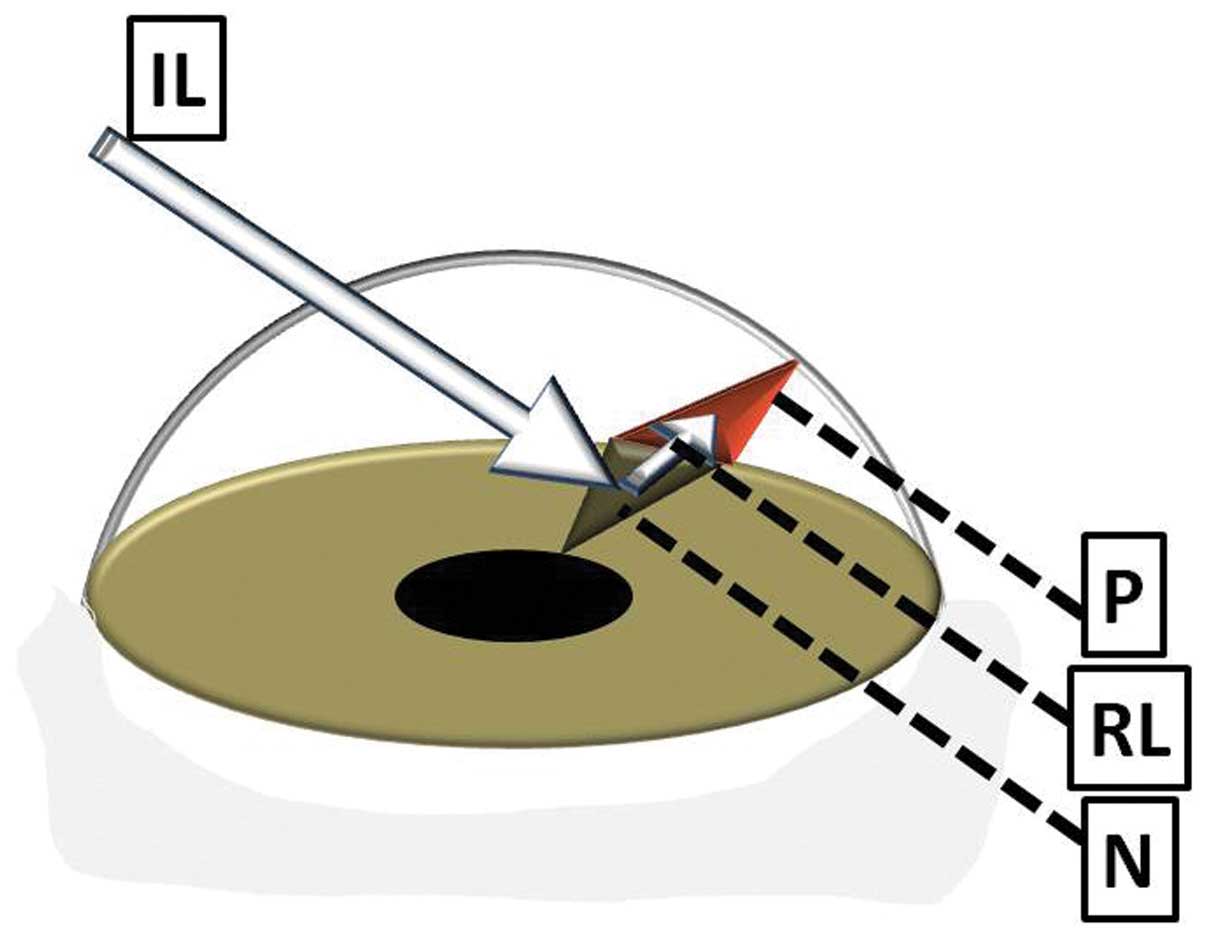
Pterygium concomitant with other ocular surface lesions: Clinical implications and pathogenetic links
- Authors:
- Efstathios T. Detorakis
- George Kymionis
- Michael Tsatsos
- Demetrios A. Spandidos
-
View Affiliations
Affiliations: Department of Ophthalmology, University Hospital of Heraklion, Heraklion 71110, Greece, Institute of Vision and Optics, University of Crete, Heraklion 71003, Greece, Moorfields Eye Hospital, London EC1V 2PD, UK, Laboratory of Clinical Virology, University of Crete, Medical School, Heraklion 71409, Greece
- Published online on: November 13, 2015 https://doi.org/10.3892/etm.2015.2865
-
Pages:
69-72
-
Copyright: © Detorakis
et al. This
is an open access article distributed under the
terms of Creative
Commons Attribution License.
Abstract
In the present study, we aimed to evaluate the co-existence of ophthalmic pterygium with other ocular surface lesions in a cohort of patients from the Cretan population. This is a retrospective evaluation of all pterygia in patients examined and treated at the Department of Ophthalmology of the University Hospital of Heraklion, Greece during an 8‑year period (from June 2006 to June 2014). A total of 158 cases was examined. Ocular surface images and medical history were evaluated in order to detect concomitant ocular surface pathological conditions. Concomitant lesions included conjunctival nevi (5 cases, 3.16%), iris nevi (4 cases, 2.53%), conjunctival papillomas (8 cases, 5.06%), conjunctival intraepithelial neoplasia (CIN; 4 cases, 2.53%) and 6 cases of hypertophy of the plica semilunaris (3.79%). Of note, pterygium was overlying the iris which was occupied by the iris nevus in 2 out of the 4 cases of iris nevus. Overall, our data indicate that ophthalmic pterygium may often co‑exist with other clinically significant ocular surface lesions. The association of ophthalmic pterygium with conjunctival papillomas or CIN stresses the potential involvement of human papilloma virus in the pathogenesis of ophthalmic pterygium, whereas the topographical association of pterygium with iris nevus may offer support to the transcameral light pathway pathogenetic mechanism.
View References
|
1
|
Detorakis ET and Spandidos DA:
Pathogenetic mechanisms and treatment options for ophthalmic
pterygium: Trends and perspectives (Review). Int J Mol Med.
23:439–447. 2009. View Article : Google Scholar : PubMed/NCBI
|
|
2
|
Coroneo MT: Pterygium as an early
indicator of ultraviolet insolation: a hypothesis. Br J Ophthalmol.
77:734–739. 1993. View Article : Google Scholar : PubMed/NCBI
|
|
3
|
Chui J, Coroneo MT, Tat LT, Crouch R,
Wakefield D and Di Girolamo N: Ophthalmic pterygium: a stem cell
disorder with premalignant features. Am J Pathol. 178:817–827.
2011. View Article : Google Scholar : PubMed/NCBI
|
|
4
|
Detorakis ET, Zaravinos A and Spandidos
DA: Growth factor expression in ophthalmic pterygia and normal
conjunctiva. Int J Mol Med. 25:513–516. 2010. View Article : Google Scholar : PubMed/NCBI
|
|
5
|
Detorakis ET, Sourvinos G, Tsamparlakis J
and Spandidos DA: Evaluation of loss of heterozygosity and
microsatellite instability in human pterygium: clinical
correlations. Br J Ophthalmol. 82:1324–1328. 1998. View Article : Google Scholar : PubMed/NCBI
|
|
6
|
Detorakis ET, Drakonaki EE and Spandidos
DA: Molecular genetic alterations and viral presence in ophthalmic
pterygium. Int J Mol Med. 6:35–41. 2000.PubMed/NCBI
|
|
7
|
Detorakis ET, Sourvinos G and Spandidos
DA: Detection of herpes simplex virus and human papilloma virus in
ophthalmic pterygium. Cornea. 20:164–167. 2001. View Article : Google Scholar : PubMed/NCBI
|
|
8
|
Gallagher MJ, Giannoudis A, Herrington CS
and Hiscott P: Human papillomavirus in pterygium. Br J Ophthalmol.
85:782–784. 2001. View Article : Google Scholar : PubMed/NCBI
|
|
9
|
Piras F, Moore PS, Ugalde J, Perra MT,
Scarpa A and Sirigu P: Detection of human papillomavirus DNA in
pterygia from different geographical regions. Br J Ophthalmol.
87:864–866. 2003. View Article : Google Scholar : PubMed/NCBI
|
|
10
|
Saw SM and Tan D: Pterygium: prevalence,
demography and risk factors. Ophthalmic Epidemiol. 6:219–228. 1999.
View Article : Google Scholar : PubMed/NCBI
|
|
11
|
Degrassi M, Piantanida A and Nucci P:
Unexpected histological findings in pterygium. Optom Vis Sci.
70:1058–1060. 1993. View Article : Google Scholar : PubMed/NCBI
|
|
12
|
Artornsombudh P, Sanpavat A,
Tinnungwattana U, Tongkhomsai V, Sansopha L and Tulvatana W:
Prevalence and clinicopathologic findings of conjunctival
epithelial neoplasia in pterygia. Ophthalmology. 120:1337–1340.
2013. View Article : Google Scholar : PubMed/NCBI
|
|
13
|
Perra MT, Colombari R, Maxia C, Zucca I,
Piras F, Corbu A, Bravo S, Scarpa A and Sirigu P: Finding of
conjunctival melanocytic pigmented lesions within pterygium.
Histopathology. 48:387–393. 2006. View Article : Google Scholar : PubMed/NCBI
|
|
14
|
Detorakis ET, Halkia A, Tsakalaki V and
Spandidos DA: Association between pterygium and plica semilunaris
morphology. Clin Experiment Ophthalmol. 41:891–892. 2013.
View Article : Google Scholar : PubMed/NCBI
|
|
15
|
Harbour JW, Brantley MA Jr, Hollingsworth
H and Gordon M: Association between posterior uveal melanoma and
iris freckles, iris naevi, and choroidal naevi. Br J Ophthalmol.
88:36–38. 2004. View Article : Google Scholar : PubMed/NCBI
|
|
16
|
Coroneo M: Ultraviolet radiation and the
anterior eye. Eye Contact Lens. 37:214–224. 2011. View Article : Google Scholar : PubMed/NCBI
|














